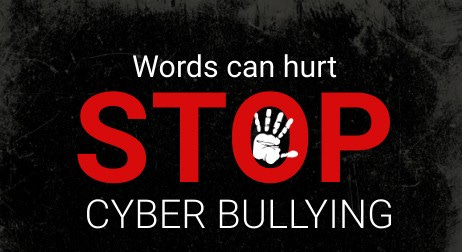
Sextortion - What is it and why do you need to know?
Sextortion is a type of blackmail when someone threatens to share nude images or videos of, or sexual information about, someone online…
Sextortion is a type of blackmail when someone threatens to share nude images or videos of, or sexual information about, someone online unless they are paid money or agree to do something else for them, such as send more images.
Sextortion is a crime and can be committed by an individual or a group of people working together.
Why do I need to know about it?
There is an increasing risk from criminal gangs and other individuals targeting young people in this financially motivated way.
It is a very difficult and distressing thing for a young person to experience, and they may not seek help from a trusted adult as they may feel scared, embarrassed or worried about getting in trouble.
Any young person can be targeted by sextortion, but some research has shown that boys are more likely to be targeted by financial sextortion.
How does it happen?
Sextortion involves the perpetrators gaining access to a young person’s nude images or videos, or sexual information, and then using these to blackmail them.
Some of the most common ways perpetrators obtain the content used in sextortion include:
Gaining a young person’s trust online, pretending to be a new friend, and then asking them to send pictures or videos to them.
Asking a young person to have a video call, or livestream for them (sometimes referred to as ‘going live’) on social media apps like, and then taking a screenshot from these.
Stealing them from young people by hacking one of their online accounts.
Using digital manipulation to edit a young person’s images to make them seem sexual, including using AI.
In some cases, a perpetrator may pretend to have images even if they do not.
Recognising the signs your child may be experiencing sextortion
Young people may find it difficult to tell their parent or carer or another trusted adult if they are targeted by sextortion, so it is important to look out for signs that it might be happening.
There may be a change in their behaviour, for example they might become quiet, withdrawn, erratic, angry or emotional; their sleep might be affected; they might not want to engage with schoolwork.
They might become secretive or guarded about their device(s).
They might start talking about a new online friendship – it might sound like a connection that has formed very quickly, and they might want to spend a lot of their time talking to this online friend.
They might ask you for money with little or no explanation about what they need it for.
What to do if your child has been targeted
If you are made aware that your child has been targeted by sextortion, it is important that you support them.
Remain calm and reassuring and avoid expressing any anger or upset directed at your child, as this may prevent them from sharing more information about what has happened with you.
Make sure that they know that this isn’t their fault – they have been the victim of a crime, and the perpetrator is to blame.
Allow them time to speak and have an honest conversation to find out what has happened.
Help your child collect the evidence of what has happened and avoid deleting anything. Evidence may include screenshots of: the person’s profile; messages which have been sent; usernames; emails; addresses; phone numbers; and bank details if they provided them.
Help your child report the perpetrator to the police and on the social media platforms it has happened on.
Help your child block the perpetrator on whatever platforms they have used to communicate with your child, as well as blocking their phone number if it was used.
You may want to inform your child’s school, as they can provide further support for your child.
If your child’s nude images have been shared by the perpetrators, use specialist services such as ReportRemove and TakeItDown.
Making a report
Sextortion is a crime and should be reported to the police, as well as on whatever platforms the perpetrator has used to communicate with your child.
In the UK, report the incident to your local police force by calling 101 (if you have a hearing or speech impairment, use their textphone service on 18001 101).
You can also report directly through CEOP who are a law enforcement agency working to help keep children safe from online harms.
Visit Report Harmful Content for advice on how to contact and make a report to all of the major social media platforms.
Use specialist services to report and remove any images that have been shared or leaked:
ReportRemove – run by Childline to help young people under 18 in the UK to confidentially report sexual images and videos of themselves and remove them from the internet.
TakeItDown – a service that can help you remove or stop the online sharing of nude, partially nude, or sexually explicit images or videos taken of you before you were 18.
Remember, help is available for you and your child, and you are not alone.
Talking to your child
Issues like financial sextortion can be tricky to discuss with your family, but an open conversation with your child about their life online can help protect and support them in the future.
Be available and have open conversations with your child about the online world, both the positives and the negatives, and tell them that they can talk to you about anything that is worrying or upsetting them.
Take an interest in your child’s online interactions and check in often to find out who they are talking to. Talk to them about how to interact with online only friends safely and responsibly.
Talk to your child about healthy and unhealthy relationships, online and offline. E.g. it is never healthy for someone to pressure you to do something you don’t want to do.
Discuss the potential risks of sharing nude images – an online friend might not be who they say they are, and they may misuse those images.
Help your child to review their privacy and security settings on their devices and accounts, and remind them that they should talk to a trusted adult if someone online worries or upsets them.
Encourage your child to always speak to a trusted adult if anything online worries or upsets them.











